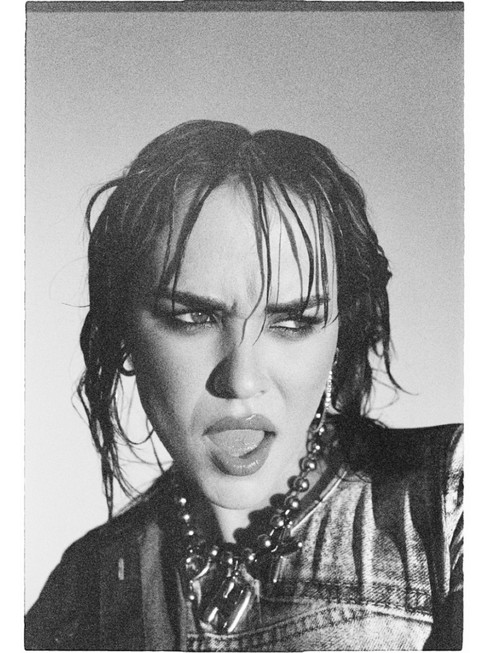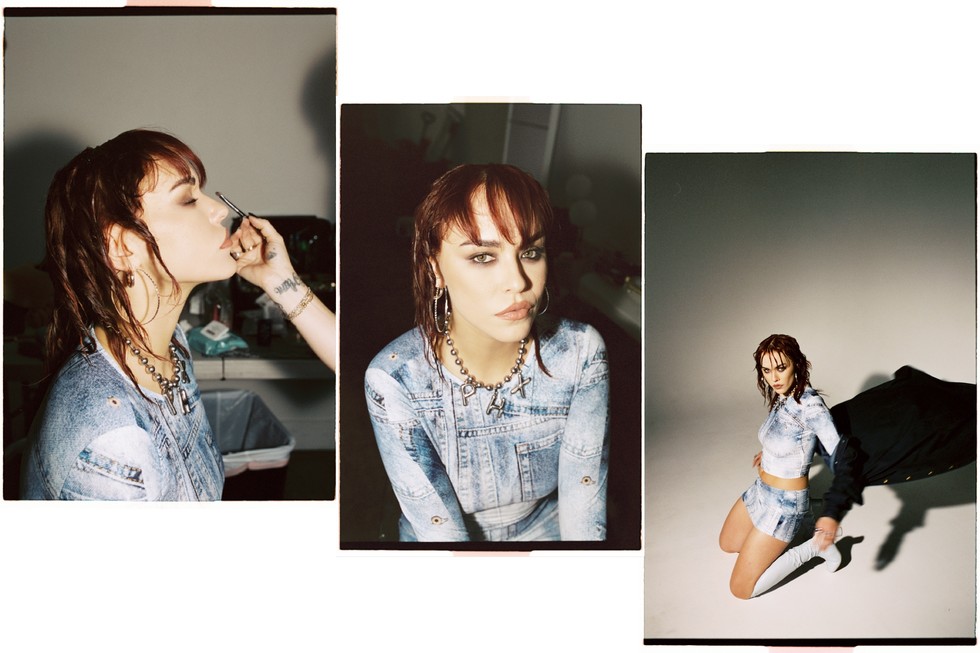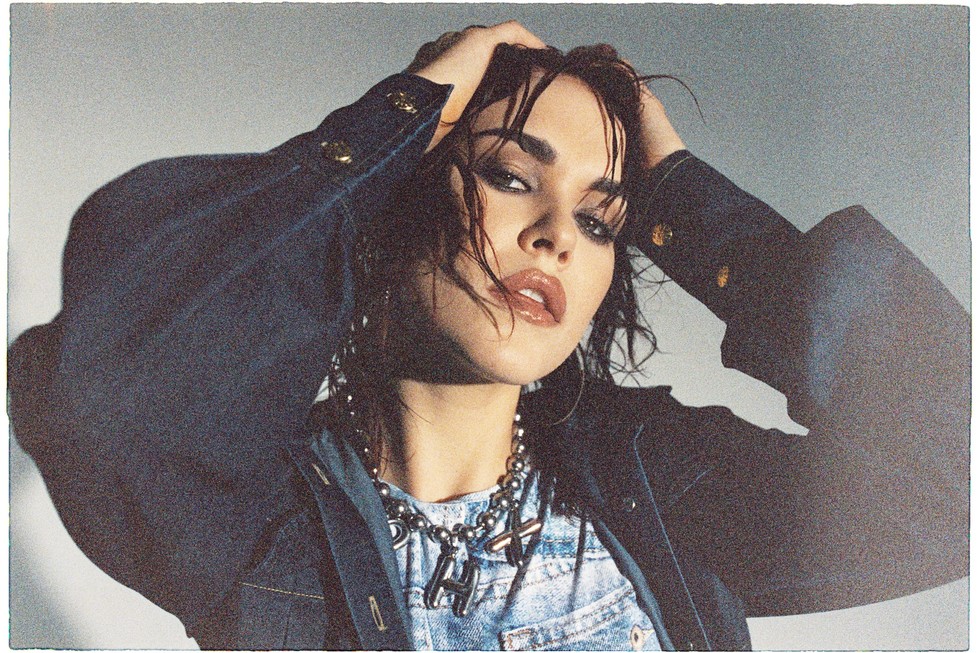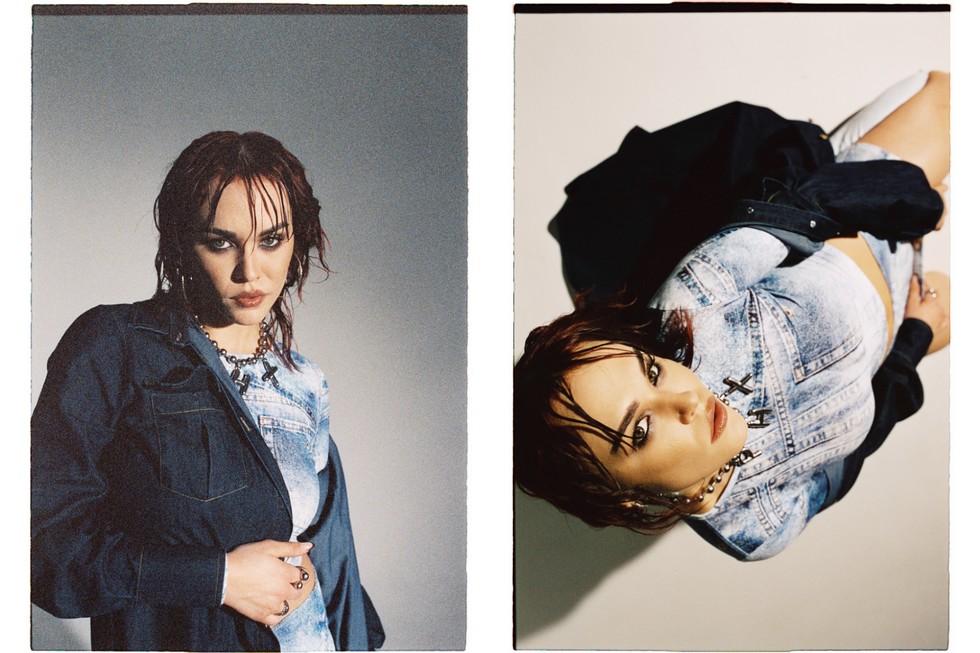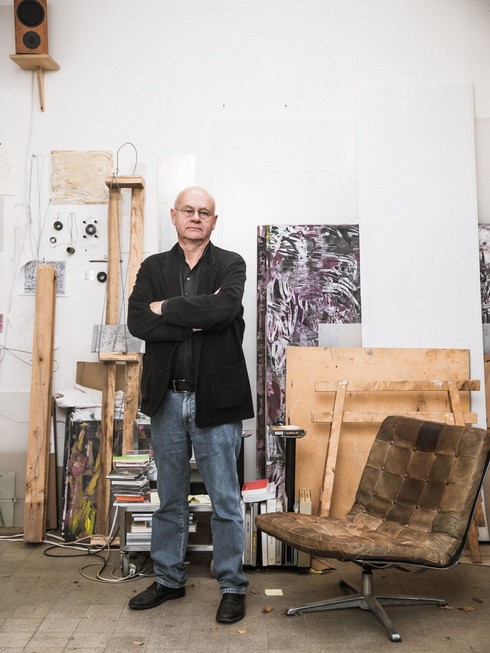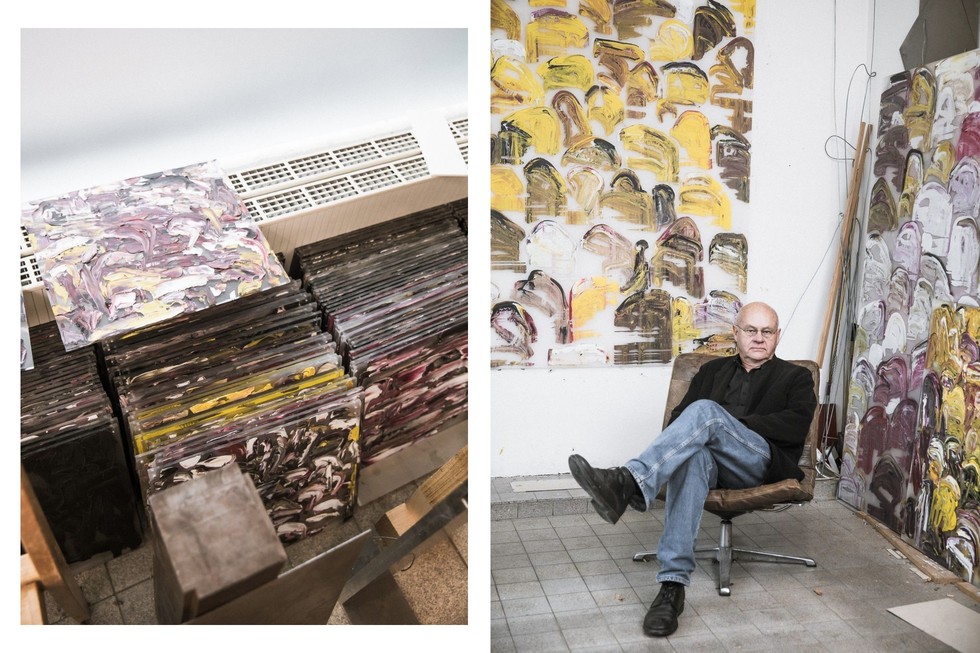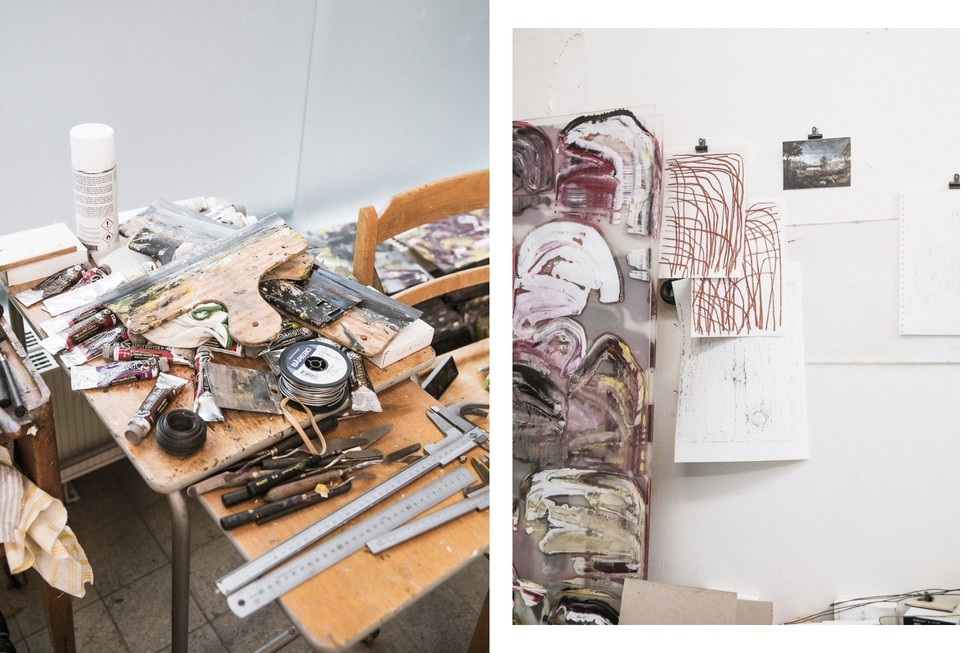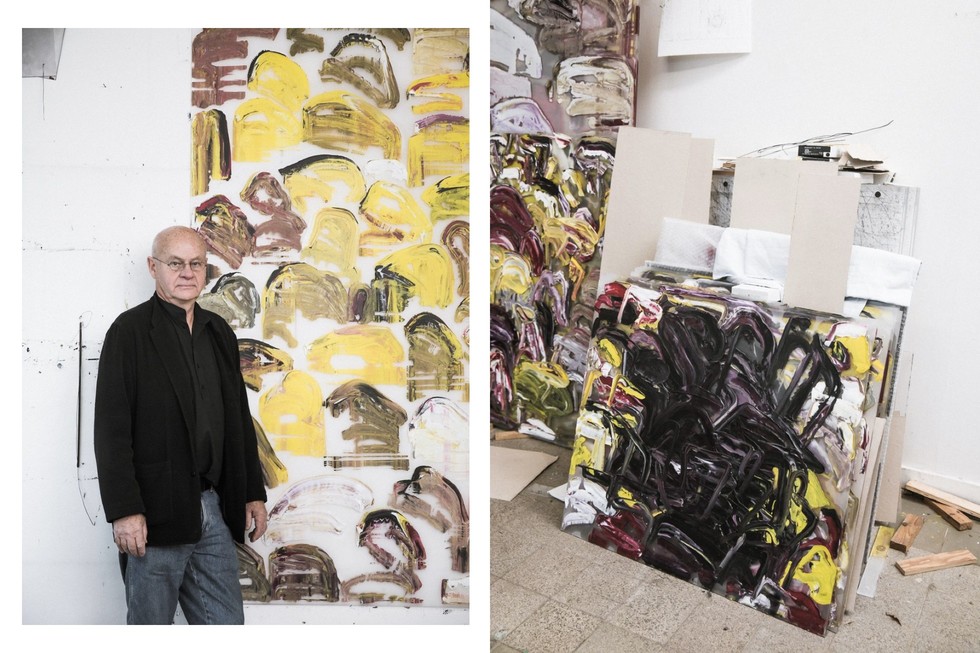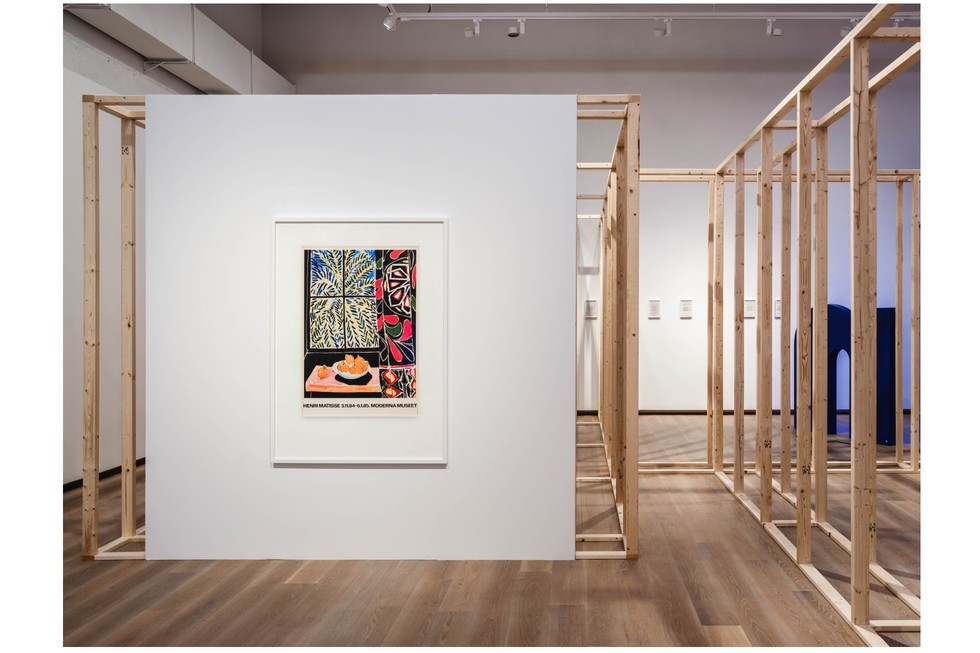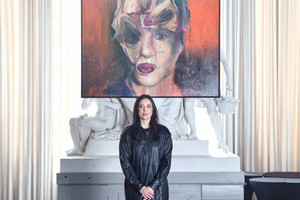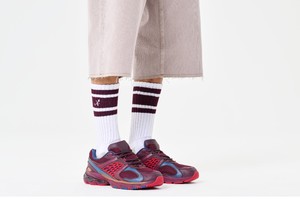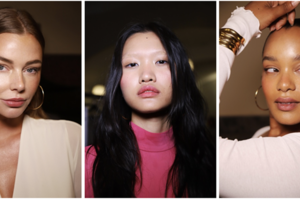“Pop’s next It-girl” UPSAHL x Odalisque
Written by Josie McNeill by Filippa FinnAccording to Taylor Upsahl, better known as her pop star persona UPSAHL, she never really made the decision to start making music–it was always a part of who she was.
“I started doing music before I really could remember honestly,” UPSAHL said. “ As soon as I had a personality, the biggest part of my identity was music.”
UPSAHL said she grew up in a music environment, with her dad playing in punk bands and having a house full of guitars, a piano, and a drum set. She was then classically trained in music at a performing arts high school starting at age 10.
At night after classes, UPSAHL said she played at “little shitty clubs” and started putting out albums. But it wasn’t until she moved to Los Angeles after high school that she began to pursue music full time.
Now, after releasing the fourth installment of THE PHX TAPES project on Oct. 20 and embarking on a tour with Melanie Martinez, Upsahl released SNOWGLOBE, a new holiday mixtape on Nov. 10.
Odalisque sat down with UPSAHL to discuss her upcoming projects, tours, and how she became the pop artist that she is.
Did you mostly listen to punk rock music growing up? Or did you mainly have other influences?
Definitely a little bit of everything. I mean, I listened to a lot of punk bands that people probably never heard of just because of my dad and the bands that his friends were in when I was a kid. So I listen to a lot of that, then a lot of Queens of the Stone Age, a lot of Weezer that was a really big influence for me and a lot of No Doubt. Gwen Stefani was my idol. I just wanted to be Gwen Stefani growing up. I thought she was so badass. I listened to some OutKast. I feel like I just kind of listened to a mixture of a lot of things. But what my parents had playing around the house was a lot of punk music and a lot of classical. The only thing I didn't grow up listening to was country and pop music weirdly enough. I didn't really get into pop music until I moved to LA and started writing pop music, which is crazy.
Why did you choose to go into pop music?
I think it happened by accident. When I started writing songs, I was just like in my room playing guitar, and so naturally, the music sort of went in a singer-songwriter direction production wise. It wasn't until I moved to LA and started working with other producers that I realized there's a world of different sounds at my disposal. It doesn't have to be just a live instrument, we can program drums or use a synth or whatever. So that opened my eyes to the endless world of production and getting to work with producers. And then also just pop songwriters made me fall in love with the art of making pop music. I think I fell into it sort of naturally just by working with other people.
How did you come up with the concept to do a series of little mixtapes?
I knew I wanted to call it THE PHX TAPES at the top of the year. Because I was just having so much fun in the studio making music, I made this goal for myself going into sessions in January that I wasn't really going to worry about genre at all. I was just gonna have so much fun in the studio, and if I wanted to make a really alt rock song one day and then a house record the next, I just like gave myself the freedom to do that. It just started to remind me of how I felt when I was making music as a kid back in Phoenix when I had like no idea what the fuck I was doing, and pulling up to the studio and just seeing what would happen. That's how I felt–it was sort of this naiveness, so it kind of made sense to call the project THE PHX TAPES. It's sort of an ode to all the influences that I grew up on and that creative and childish sort of freedom that I was feeling.
Can you talk a little bit about the sound and concepts behind your songs “NO HANDS” and “SLAYYYYY” that are being released on the fourth installment of the mixtapes?
Each volume is meant to feel very different. And even like the side A versus the side B for each volume are meant to feel worlds apart. “NO HANDS” is side A. It's very dark and dancey, which I feel like regardless of where I go with my music, I always go back to the old, dark, dancey records. That's what “NO HANDS” sounds like. It's very chaotic and aggressive. And then “SLAYYYYY” which is side B in volume four, is completely different. It was just me having fun. I wrote the song as a joke in the studio and honestly never thought I was going to put it out because it was like that much of a joke. And then I just kept coming back to listen to it. I was like wait, this is actually like a really fun song. So that one's the more “I don't give a fuck,” very freeing song. I'm really excited for both of these because I feel like lyrically as well, “NO HANDS” is very much about creating chaos and wanting to break out of whatever is like holding you down and “SLAYYYYY” is the result of that chaos, which is just like fucking insane and very unhinged.
I feel like that's becoming a more common thing for artists to do now, releasing a song they originally wrote as a joke.
For real, I feel like when you write a song as a joke, and then put it out, at least for me, listening to other artists who put out songs like that, you can feel how fun it was to make while listening because they weren't taking themselves seriously, you know?
Definitely! Why did you decide to release the mixtape two at a time instead of just releasing a full EP at once?
I just wanted to have a consistent flow of music coming out, but I didn't really want to do an EP. I didn't really want to do an album. I wanted to just do something a little less serious than that. So I landed on the idea of a mix tape and then splitting it up into like the different volumes just sort of allowed me to stay connected with my fans. It has kept me connected with them throughout the year because it feels like every month or so we get a new release and another thing to connect over and talk about. I also just feel like the state of music listening right now like we all have very short attention spans, obviously. So if I can, like sprinkle a song or two, here and there, I'd rather do that than be like, “listen to my entire album start to finish.”
That's cool. Do you think TikTok plays a role in that?
Totally. I mean, I even catch myself sometimes only knowing a song because it's like a 15 second clip, or whatever. I'm trying so hard to not be that way and actually go and listen to the rest of the song, but at the end of the day, that's just how we as listeners are at this moment in time. So I think instead of fighting against it and being like, oh, like “why don't people listen to my album?” The whole point of music is to cater to your audience anyway, so if you guys want it song by song, we'll do that. If one day you want a project I'm definitely gonna do a project next year but I'll still probably sprinkle it out slowly. It just makes it more fun for me and allows me to be able to grow as the project is growing too because if I write a song that I really love, I can put it out on the next volume two weeks later rather than having a project set in stone.
How do you think you’ve grown since your project Lady Jesus with THE PHX TAPES?
When I put out my very first project when I first moved out to LA, I was very much scared of my artist's voice. I had this song called “Drugs” that I was really really scared to put out because I thought some people were gonna hate it, that I took it too far with the lyrics. I was scared even after putting it out. I was terrified of the song, and I think now I'm able to recognize that the point of being an artist and putting out music is to do shit that scares you and actually have something to say even if it does piss somebody off or if someone hates it. So I think the competence in my own voice and being able to say unhinged shit in my songs unapologetically is a muscle I've been working out for the past five years.
You write about a lot of candid topics in your songs. I was wondering if you want to talk about why you think it's important for people to hear honest songwriting?
There's two ends to it. I think on one end, it's really fun to hear the super bad bitch, I'm hot, fuck everyone songs. Like I love those songs. But it's really cool for me as a fan of other artists to hear an artist do a super bad bitch song but then also be able to be really vulnerable and open about depression or whatever it is they're going through. So I try to do that as much as I can. I think that's why THE PHX TAPES have been so fun for me. I put out a song called “WET WHITE TEE SHIRT” which is this hypersexual song, and then less than two months later put out a song called “0 OR 100” which is about every mental health issue that I've ever struggled with. It's cool that as an artist, I can be both of those things at the same time. I just tried to embody that with my entire project.
You have a song called “Happy Endings” with Mike Shinoda and iann dior. Can you talk a bit about how this collaboration came together and what it was like working with them?
It was during COVID and we obviously weren't doing in-person sessions because it was 2020. My friend Pete Nappi, who I'd been doing so many sessions with on Zoom just so that we could stay sane. We were like, “we need to create even if we can't leave our houses.” He was like “I’m doing a session with Mike Shinoda next week, you should join.” Obviously I knew Mike Shinoda was a fucking legend because of Linkin Park. I remember I called my dad I was like “I have a session with this guy, Mike Shinoda, and he's like ‘are you fucking kidding me? This guy's a legend like you better bring your A game.’” So I went into the Zoom and we wrote the hook to “Happy Endings,” and I cut the original demo vocal just in my room and sent it away. The goal was honestly to find some big female artists to feature on and it'd be like Mike Shinoda, featuring whoever. I was just the demo singer, essentially. And then Mike called me one day and was like, “I've been trying to think of other artists, but I just really liked how your vocals sound if you want to just stay on the track?” And I was like “are you joking? I’d be honored.” So that was just Mike being really sweet and liking how the original vocal sounded. We just rolled with it. But yeah, an honor. Truly. I've learned so much from him for sure.
Do you have any other dream collaborations?
Yeah, I say it in every interview, and I really hope one day it just manifests itself. But Doja Cat. I'm obsessed with her. I would die.
You also toured with Tove Lo recently. How was that experience, and how has your performance style evolved since you first started doing festivals with Olivia O'Brien?
This year has been really fun. This is my first year of getting to play festivals, which has been really cool. I think that's a different setting, obviously, than like playing a club show or an inside venue. It's very different. So that's been really fun getting to go on the Tove Lo tour. Anytime I get to open for another artist, it's like a masterclass on touring. I get to watch them do their show, and I get to see what they do for their pre-show ritual or post show. Just watching people who are fucking killing it, getting to like experience their greatness and their tour routine is really cool for me. And Tove was the sweetest headliner I think I've ever opened for. She was just so sweet, and her fans were incredible. The shows were so high energy and so fun. I wish I could have stayed on that tour for another year. It was so much fun.
Was there anything you learned from your last touring experience that you will bring to your next one, opening for Melanie Martinez?
I booked this tour super last minute. I thought, like a couple of weeks ago, that I was done touring for the year. And then I got this tour, which I'm so excited for, but I played my last show of the year at Music Midtown in Atlanta. Because I thought it was my last show of the year, I just had like so much fucking fun. Me and my band were like, “we don't even care if anything goes wrong, like it's just gonna be fun.” It was one of the most fun shows we've ever played. So I think that the sort of the energy I'm going to try to bring to the Melanie Martinez tour in general is just like rolling with the punches and just being as present as possible on stage and just having fun.
Is there anything you want your listeners to take away from your music in general?
I mean, for the music in general, it's so cheesy, but just being unapologetically yourself, regardless of what area of life you are in. I think THE PHX TAPES really embodies that because if you listen through the project, especially now that volume four is going to be out, each song feels like an identity crisis. The point of it all was to show all aspects of my musical identity that I've been feeling this year. I think just owning that and having so much fun in the studio and trusting that my voice and what I have to say is going to be the through line. It was like such a cool learning growing experience for me, getting to make this project. It's been really cool.
One last question: why did you decide to go by just your last name UPSAHL as your stage name?
It sounds so stupid, but I was such a Taylor Swift fan growing up. And then when I was like, “I want to be an artist,” I was like, “well, there's only one Taylor and that is Taylor fucking Swift, so I need to come up with a different name.” And then for a while, I was trying to explore a bunch of random names that had nothing to do with me and nothing was sticking. Then one day I just realized, oh UPSAHL, like my last name that sounds cool. And also, like we were talking about in the beginning, my family has had such a big impact on me doing music with my dad being in music and just growing up in that environment. So I think going by my last name is sort of like an ode to my family and Phoenix and where I come from, so it all just felt very natural.

